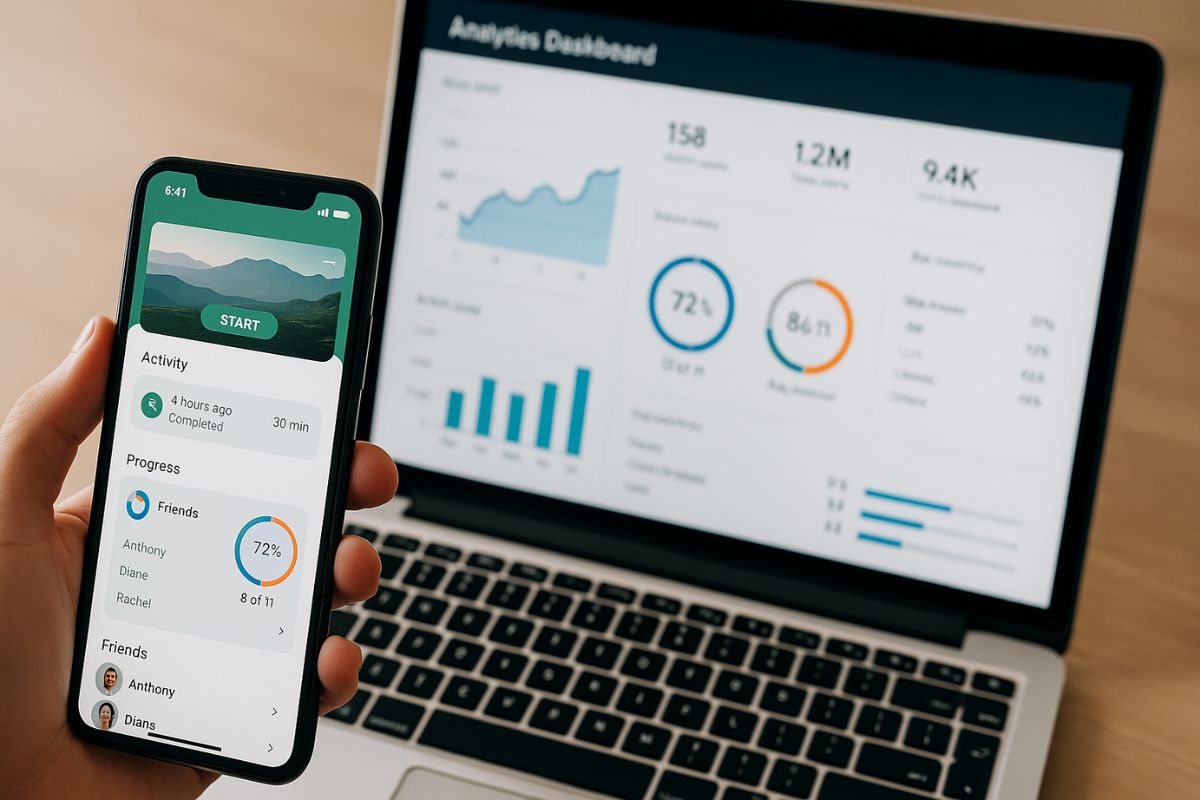
Launching a consumer app in 2025 feels a lot like opening a coffee shop in a city where every corner already has three. The App Store and Google Play are overflowing, acquisition costs are rising, and attention spans are shrinking by the day.
But some apps still manage to stand out. They don’t just enjoy a flashy launch day, they sustain growth, climb charts, and build loyal user bases that stick. The difference isn’t luck. It’s that they’ve mastered a few fundamentals that most teams overlook.
So what does it take to crack consumer app growth this year?
Retention First, Growth Second
If there’s one truth that hasn’t changed in a decade, it’s this: downloads don’t matter without retention. You can run campaigns and watch installs spike, but if users leave after one session, your funnel is basically a leaky bucket.
Look at Duolingo. The app is technically “just” a language-learning tool, but the daily streak mechanic makes it habit-forming. It gives users a reason to come back, not because they need to, but because they want to.
Or take Strava. On paper, it’s a fitness tracker. But its social layer, comments, kudos, leaderboards, transforms it into a platform where users feel seen and encouraged. That’s why people open it after a workout, not just during.
The apps that last are the ones that design return triggers into their experience. Notifications, rewards, social nudges, whatever it takes to give people a reason to open your app again tomorrow.
Paid Growth Isn’t Dead, It’s Just Different
When Apple’s ATT (App Tracking Transparency) changes hit, a lot of founders threw up their hands and declared: “Paid channels don’t work anymore.” But the teams that stuck it out learned something else: paid still works, it just requires a different approach.
In 2025, success with paid isn’t about big-budget campaigns that run unchanged for months. It’s about iteration speed and precision targeting. The best-performing apps refresh their creatives weekly, test multiple hooks, and kill underperforming ads quickly.
Just as importantly, they’re not measuring performance on installs alone. Instead, they track cohort retention, lifetime value (LTV), and payback windows. An ad that brings in a $10 install might look expensive, until you realize that the user is worth $80 over a year.
Paid growth didn’t die. Lazy paid growth did.
Community > Virality
The golden days of overnight virality are mostly gone. You can’t count on a TikTok video or influencer shoutout to build a lasting user base. What’s working now is community-driven growth.
- Strava makes exercise a social activity.
- The public makes investing a conversation.
- Calm leaned into group challenges around mindfulness.
The psychology is simple: people stay where they feel connected. If your app creates a sense of belonging, even for a small, niche group, users won’t just stick, they’ll spread the word.
Think about it: the early communities don’t need to be millions strong. Even a few hundred loyal users, if deeply engaged, can become your best acquisition channel.
The Metrics That Actually Count
Most founders drown in dashboards, but three metrics matter more than anything else for consumer app growth in 2025:
- Retention (Day 1, 7, 30): The clearest signal of product-market fit. Do users come back after they try you once?
- CAC vs. LTV: Are you acquiring customers at a price that your revenue model can sustain? If your CAC is $20 and your LTV is $15, growth will only speed up your burn.
- Referral Rate: Are your users bringing in friends? A high referral rate compounds growth faster than any ad budget.
Everything else, CTRs, impressions, even DAU spikes, is noise unless these three are trending in the right direction.
Growing a consumer app in 2025 isn’t about chasing the next growth hack. It’s about getting the fundamentals right: building for retention, running paid campaigns with discipline, and fostering communities that give your product staying power.
The app stores will only keep getting more crowded. But apps that focus on retention loops, disciplined paid strategies, and real communities won’t just survive, they’ll thrive.

